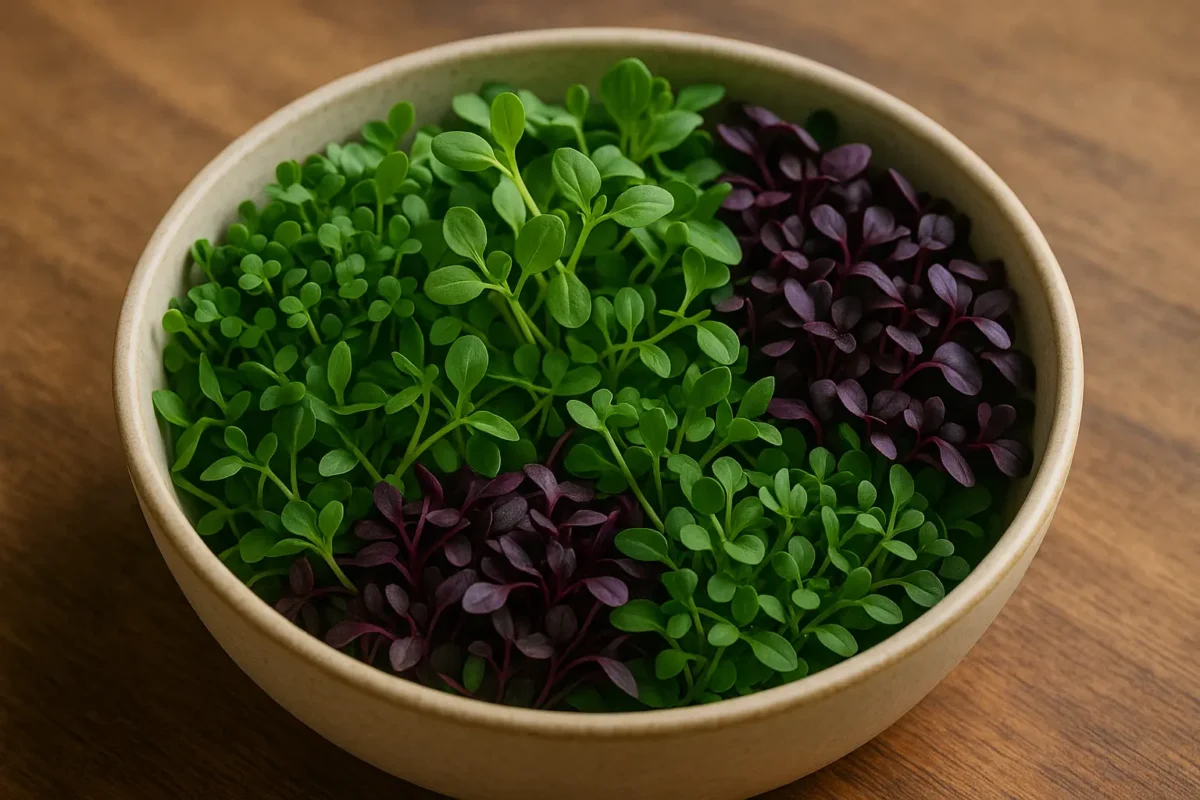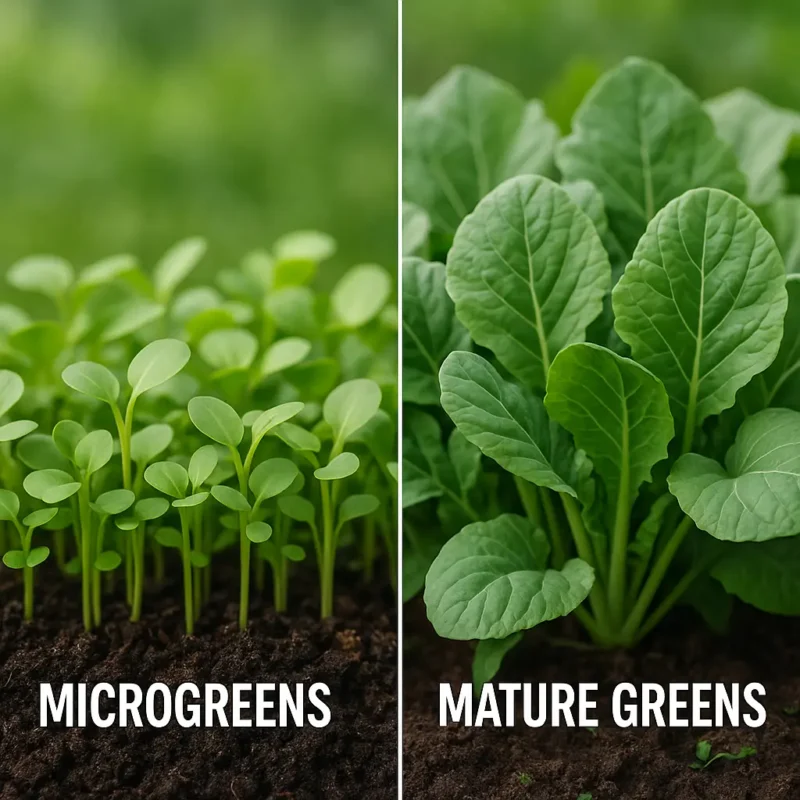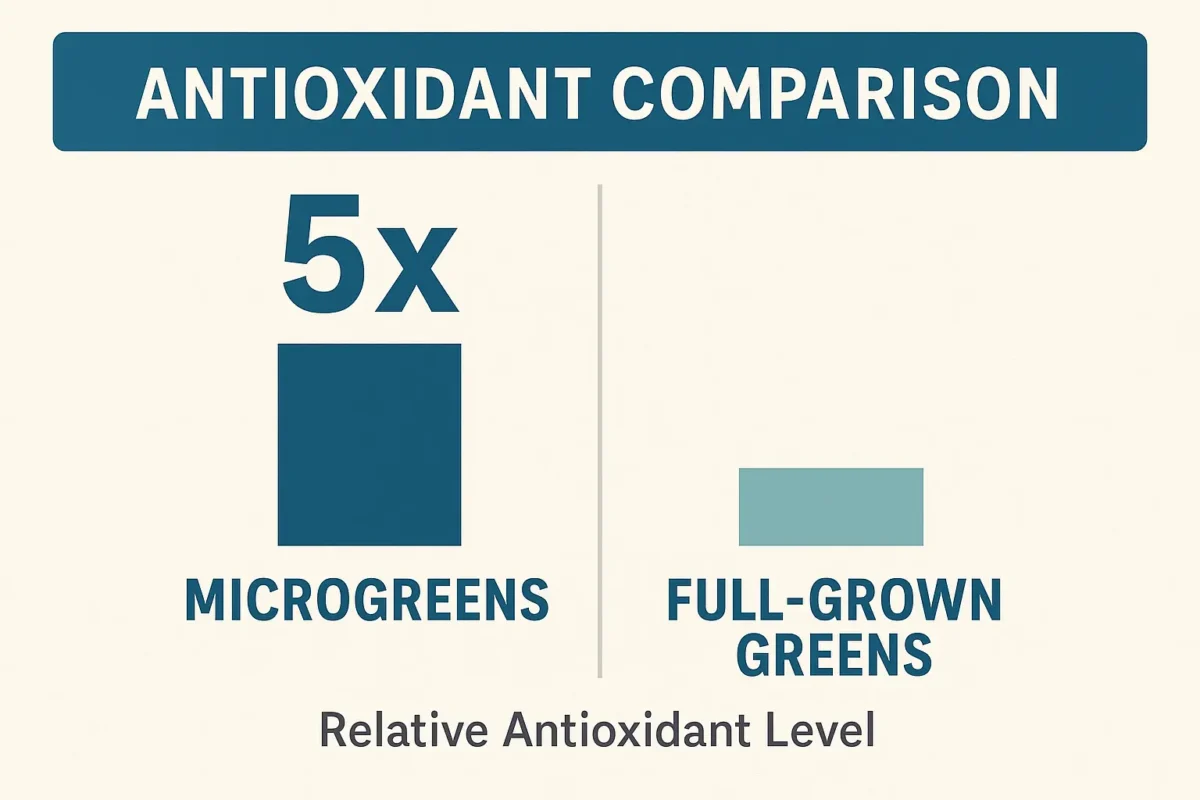
Introduction
Chronic illnesses such as heart disease, diabetes, and cancer are among the leading causes of premature death in the UK and globally. While no single food is a silver bullet, emerging research shows a promising link between microgreens and chronic illness prevention. These tiny, flavour-packed greens are more than just a culinary trend; they are concentrated sources of essential nutrients, antioxidants, and bioactive compounds that may support long-term health and reduce disease risk.
What Are Microgreens?
The Basics
Microgreens are young vegetable greens, harvested just after the first true leaves have developed. Typically 2.5 to 7.5 cm tall and harvested within 7 to 21 days of germination, they are gaining attention for their potential role in supporting health. As research continues to explore the connection between microgreens and chronic illness, these tiny greens are proving to be much more than a garnish.
Popular Varieties
- Broccoli
- Radish
- Pea shoots
- Sunflower
- Kale

These small greens pack a big nutritional punch, often containing higher nutrient levels than their mature counterparts.
The Nutritional Power of Microgreens
Rich in Vitamins and Minerals
According to a study by the USDA and the University of Maryland, microgreens can contain up to 40 times more nutrients than mature leaves (Xiao et al., 2012)—a significant factor in the growing interest in microgreens and chronic illness prevention through nutrient-dense diets.
Key nutrients include:
- Vitamin C
- Vitamin E
- Vitamin K
- Beta-carotene
- Lutein
- Potassium
High in Antioxidants
Antioxidants play a crucial role in fighting oxidative stress and inflammation, both of which are key drivers of chronic disease. Microgreens, especially red cabbage, amaranth, and cilantro, have been shown to have high levels of polyphenols and flavonoids.

How Microgreens May Reduce the Risk of Chronic Diseases
Cardiovascular Disease
Heart disease remains the leading cause of death in the UK. As part of the connection between microgreens and chronic illness, their antioxidant-rich profile may help reduce LDL cholesterol oxidation and lower blood pressure—two key factors in supporting cardiovascular health.
Research Highlight
A 2021 study in the Journal of Agricultural and Food Chemistry found that red cabbage microgreens reduced LDL cholesterol and inflammation markers in mice fed a high-fat diet (Yu et al., 2021).
Type 2 Diabetes
Some microgreens, such as fenugreek and broccoli, may help regulate blood sugar levels. As part of the broader link between microgreens and chronic illness, their fibre and antioxidant content can improve insulin sensitivity and support healthier glucose uptake—making them a valuable addition to diabetes-conscious diets.
Supporting Data
Research from the Journal of Functional Foods showed that broccoli microgreens significantly improved fasting blood sugar and insulin levels in diabetic rats (Professor Anders Rosengren).
Cancer Prevention
Cruciferous vegetables like broccoli are known for their cancer-fighting compounds, such as sulforaphane. Microgreens concentrate these compounds.
Sulforaphane in Action
Broccoli microgreens contain 20-50 times more sulforaphane than mature broccoli, a compound shown to induce detoxifying enzymes and inhibit tumour growth (Fahey et al., 1997).

How to Incorporate Microgreens into Your Diet
Simple Ways to Add Them Daily
- Sprinkle on top of soups and salads
- Blend into smoothies
- Add to sandwiches and wraps
- Use as garnish for main meals
Grow Your Own
Home growing is easy and cost-effective. All you need is:
- Trays with drainage
- Growing medium (e.g. coco coir)
- Seeds
- Sunlight or LED grow lights
This makes microgreens an accessible superfood that can be harvested in as little as 10 days.
Conclusion
Microgreens are more than just a culinary garnish. Their concentrated nutrient and antioxidant content plays a growing role in the conversation around microgreens and chronic illness. From supporting heart health to reducing cancer risk, these tiny greens pack a powerful health punch that may offer protection against some of the most common and deadly chronic conditions.
Making microgreens part of your daily diet is a simple, affordable step toward a longer, healthier life.
Want to learn more about microgreens and their impact on health? Read our full guide on the Antioxidant Power of Microgreens →
Disclaimer: This article is for informational purposes only and does not constitute medical advice. Consult your GP or dietitian before making dietary changes.
